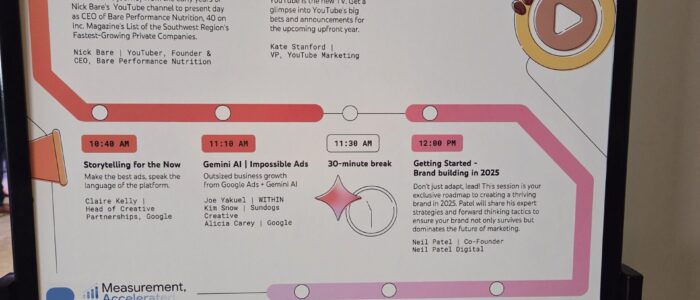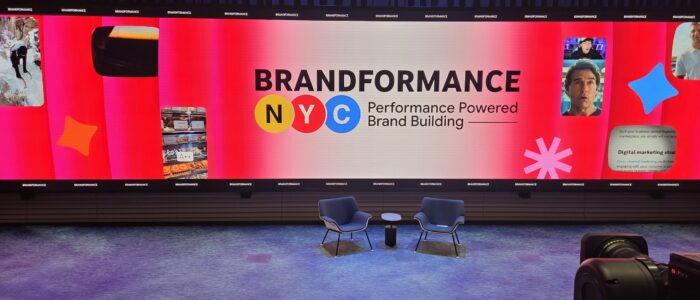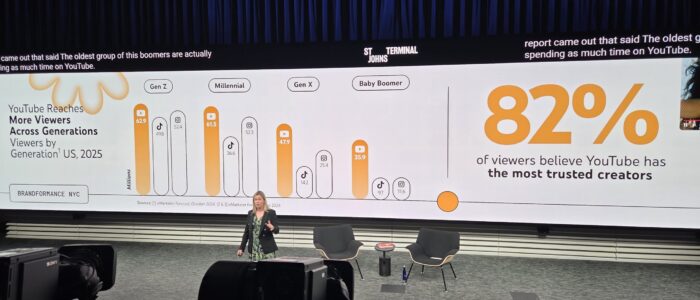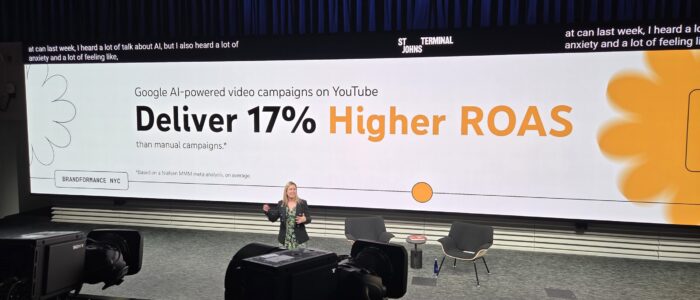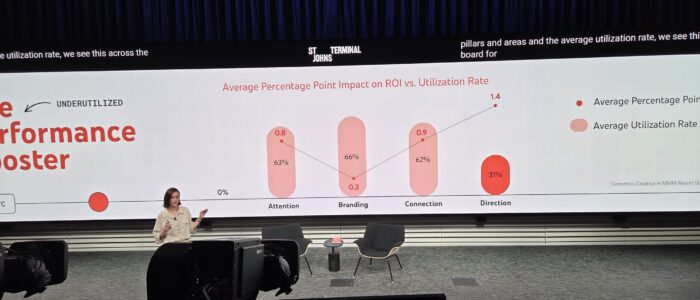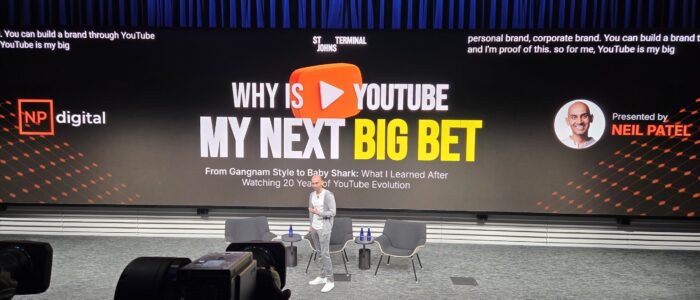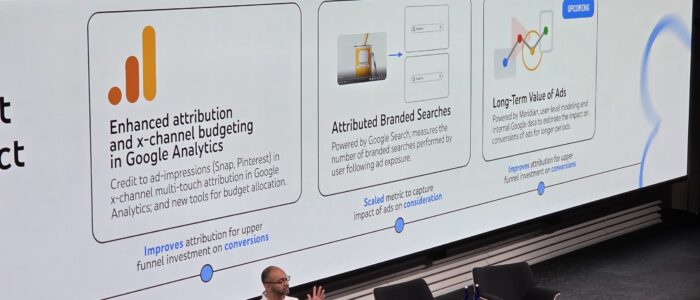Brandformance: Key Insights for Marketing Leaders (Part 1)

The convergence of brand building and performance marketing has never been more critical. At the recent Brandformance conference, industry leaders shared groundbreaking insights that are reshaping how we approach integrated marketing strategies. As expected, the content was centered on the importance of YouTube as a channel touching every part of the customer journey, but I think these insights can be applied far and wide across your marketing strategy. As marketing leaders, understanding these evolving dynamics is essential for driving sustainable growth and competitive advantage.
YouTube’s Dominance in the Streaming Landscape
For the first time, streaming TV has reached viewership levels of both broadcast and cable viewing combined (Streaming: 43.8%, Broadcast + Cable: 44.5%). YouTube has cemented its position as the leader in streaming, capturing 12.5% of all TV viewership in the United States. This massive reach comes with a trust factor that’s unmatched in the digital ecosystem – 82% of viewers believe YouTube hosts the most trusted creators. For marketing executives, this represents a unique opportunity to leverage authentic voices at scale.
The platform’s evolution into a comprehensive marketing ecosystem is particularly noteworthy. With 18 million users watching podcasts monthly and the introduction of shoppable Connected TV experiences powered by merchant centers, YouTube has created multiple touchpoints across the customer journey. The integration of AI-powered video creation tools is delivering measurable results – AI-generated creative content is producing 17% higher ROI compared to manual creative production.
Perhaps most intriguing is YouTube’s Peak Points technology, which identifies moments of deepest engagement within video content and strategically serves advertisements immediately after these high-engagement moments. Don’t underestimate the importance of long-form content – :60 or greater is the most consumed content on YouTube, followed by shorts. Using Google’s built in creative suit, focus on producing long-form content and leverage AI tools to create many short-form videos. There are also many AI other video editors proving they are worth the investment, like OpusClip.
Authenticity as a Competitive Advantage
The most compelling insight from creator Nick Bare centered on authenticity as a driver of customer acquisition. Drawing inspiration from storytelling masters like Casey Neistat, Bare emphasized that his authentic connections consistently outperform traditional advertising approaches.
He paraphrased the quote, “your brand is built in drops, but spilled in buckets,” highlighting the importance of trust and engagement as cornerstones in your marketing strategy. Consistent, daily content creation and consumer engagement are critical as brand-building activities.
When he stated that performance marketing should amplify brand equity, my performance-marketing heart skipped a beat. But his take on brand first, performance-marketing second emphasize an integrated strategy, rather than operate independently from it. A strong, trusted, reliable brand will drive customers through the purchase journey more effectively and efficiently, and keep customers returning. Lower CAC – Higher LTV – every executives favorite acronyms.
The Four Core Consumer Behaviors
Claire Kelly’s framework identifying four core online consumer behaviors provides a strategic lens for content planning and channel allocation:
Searching represents intent-driven behavior where consumers actively seek solutions. Streaming indicates a learning mindset where users engage with long-form content to gain deeper understanding. Scrolling reflects a more passive consumption state where short-form content serves as entertainment or brief engagement. Shopping represents the conversion-focused behavior where purchase decisions are made.
The dynamic between scrolling and streaming is particularly important for marketing strategy. Users constantly shift between these states, and successful campaigns use short-form content as a gateway to drive engagement with more substantial long-form content that builds deeper brand connections.
The ABCD Framework for Creative Excellence
Kelly’s ABCD framework provides a practical structure for creative development:
Attention
- Use fast-paced content with immediate hooks
- Assume consumption on mobile devices with sound enabled (YouTube is a 95% sound on platform)
- Employ tight framing and break the fourth wall
- Structure longer content with compelling story arcs
Branding
- Feature brand name prominently and clearly in visuals
- Show brand on the product for maximum effectiveness
- Mention brand and product names within the first five seconds
- Demonstrate products in their intended use context
Connection
- Feature people to immediately connect with your audience
- Clearly communicate product or service benefits with visualization
- Use relatable, casual language
- Portray emotions to connect on a deeper level
Direction
- Tell customers exactly what you want them to do
The Gemini AI session outlined a systematic approach to audience research using your own 1PD, persona development, finding key themes and trends that resonate across your customers, using AI to write text prompts, and then AI image generation to develop campaign creative. This approach represents a significant evolution in how marketing teams can approach audience development and creative ideation, moving beyond traditional demographic segmentation to behavior-based persona development. Don’t be afraid to test, Test, TEST! Use tools and vet them against the team’s output and then refine your agents and prompts to continue improving results.
YouTube’s Unique Organic Reach Advantage
Neil Patel’s insights on YouTube’s organic reach capabilities highlight a critical differentiator. Unlike other social platforms where engagement drops dramatically when posting stops, YouTube continues to drive consistent organic leads over time. This represents a fundamental shift in how marketing executives should think about content investment and long-term channel strategy. The revelation that 70% of his YouTube traffic doesn’t originate from YouTube search suggests that the platform’s recommendation algorithms are driving significant discovery, making consistent content creation even more valuable for long-term brand building.
Strategic Implications for Marketing Leaders
The insights from this conference point to several critical strategic shifts that marketing executives must consider:
Integration Over Isolation: The most successful marketing approaches integrate brand building and performance marketing rather than treating them as separate functions. Performance marketing should amplify brand equity, not operate independently from it.
Authenticity at Scale: Consumers increasingly value authentic connections over polished corporate messaging. Marketing organizations must find ways to maintain authenticity while scaling their efforts across multiple channels and touchpoints.
AI-Powered Optimization: The integration of artificial intelligence into creative development, audience targeting, and campaign optimization represents a significant opportunity for marketing organizations willing to invest in these capabilities.
Long-term Content Strategy: The unique organic reach advantages of platforms like YouTube suggest that marketing executives should consider long-term content investments that build compound value over time.
Moving Forward: Implementation Priorities
For marketing executives looking to implement these insights, consider prioritizing:
- Creative Process Evolution: Implement the ABCD framework for creative development and explore AI-powered creative tools for enhanced efficiency and effectiveness.
- Authentic Content Strategy: Develop content approaches that prioritize authentic connection over corporate messaging, particularly for long-form content platforms. Build a content strategy emphasizing video with consistent posting.
- Cross-Functional Integration: Ensure that brand building and performance marketing teams are aligned and working toward integrated objectives.
- Technology Investment: Evaluate AI-powered tools for audience development, creative optimization, and campaign management.
The future of marketing lies in the successful integration of brand building and performance marketing, powered by sophisticated measurement and artificial intelligence. Marketing executives who embrace these evolving dynamics will be best positioned to drive sustainable growth and competitive advantage in an increasingly complex digital landscape. The convergence of authentic storytelling, advanced measurement, and AI-powered optimization represents not just an evolution in marketing practice, but a fundamental transformation in how successful brands connect with their audiences and drive business results.
Stay In Touch.
Subscribe to our monthly email newsletter.


